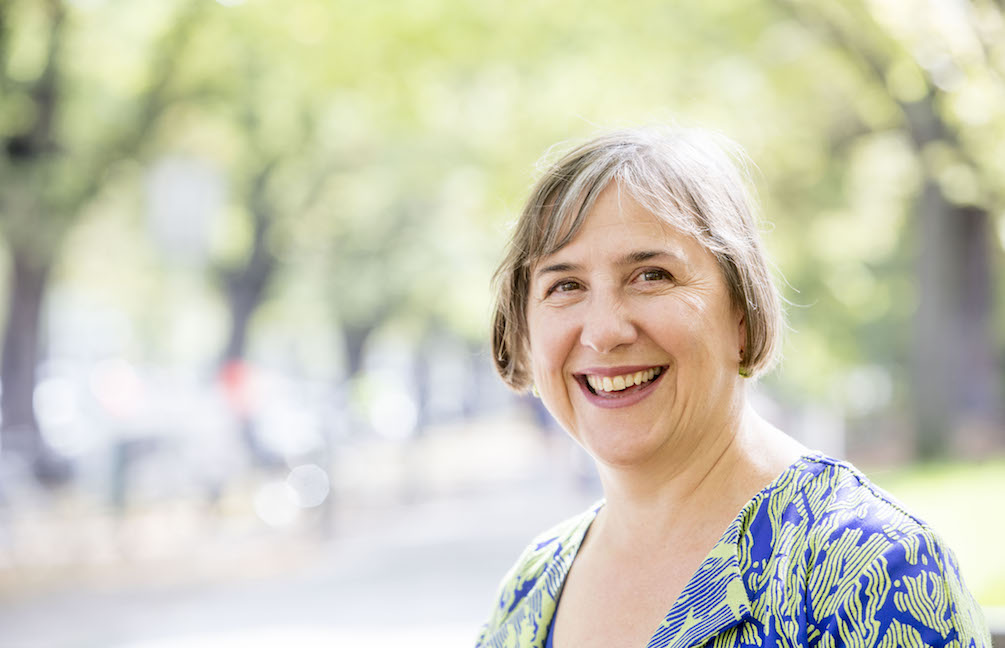Four questions with Professor Julie Bernhardt

Julie Bernhardt, professor at the Florey Institute of Neuroscience and Mental Health in Melbourne, is a clinician scientist who has spent more than twenty-five years helping patients recover from brain injuries. The scope of her work has expanded to include the use of virtual reality (VR).
Julie joins us at MPavilion for a number of events focussed on virtual reality today, including MTalks—Vital (De)Signs: VR & The Science of Space on Wednesday 1 February. Julie also pulls up a chair as a speaker in the ‘Pause’ section of MRelay. She kindly took the time to answer our questions.
MPavilion: Virtual reality is a little different to the outmoded science fiction vision of it. Tell us about your experiences with virtual reality and how it is being used today in neuroscience.
Julie Bernhardt: Virtual reality was traditionally the domain of gamers but neuroscientists and others have quickly seen its potential as a tool for both research and training. A number of my colleagues are testing VR to enhance motivation and provide novelty for training people who’ve had brain injury. The results are promising. In research, we see enormous potential for simulating situations, environments and then exploring peoples responses to these lifelike stimuli. It will help us control the environment for our research, and that could be really helpful.
MPavilion: Tell us about the themes of earlier MTalks and what will be explored further in Vital (De)signs: VR and The Science of Space
Julie: We wanted to show the public examples of hospital and outdoor environments that we believe, and research shows, can impact our feelings of well-being and safety. We are excited to see that the public clearly responded to something as simple as having a window in a clinic room or a busy, noisy, challenging to cross street. Our health redesign research aims to redesign hospitals for wellness and recovery. A major work in progress that is very exciting.
MPavilion: How is virtual reality being used now, and how do you see it being used into the future?
Julie: In the future we will probably see it also being used for people with low mobility like those with spinal cord injury or traumatic brain injury to give a restful or stimulating experience. Humans like novelty and our visual systems are very skilled to cope with movement. Imagine being stuck in the same environment and not able to move—what a pleasure VR might be.
Whether it can help with brain repair in those with brain injury is yet to be demonstrated clearly.
MPavilion: You join us for MRelay’s third leg Pause. What does the word pause mean to you?
Julie: I’m only just getting better at pausing so this is a great discussion point for me. For myself, the importance of nature as a way to help me pause is now abundantly clear. Immersing myself in the outdoors lets me reset. I need it every day.
For patients in hospitals, I think we need to think more about what being ‘stuck’ might mean for them. Patients describe to me the feeling of ‘having life on hold’. If we think of this as a negative pause, I’m interested in how we can redesign those spaces and the care we provide to reduce that experience.
Hear more from Julie Bernhardt at MTalks—Vital (De)Signs: VR & The Science of Space on Wednesday 1 February and Pause, one of four legs of this year’s MRelay, on Saturday 4 February.